
For many people, the mention of hardy sedums initially brings to mind classic Autumn Joy sedum (Sedum ‘Herbstfreude’, syn. S. ‘Autumn Joy’, Zones 3–9) with its soothing green, fleshy foliage on upright stems topped with pinkish bronze flowers. But once you jump down the sedum rabbit hole, there appears to be no end to the number of sedums in sight. Also commonly known as stonecrops, this diverse group has many long-lived, time-honored varieties as well as newer selections that continue to appear in abundance. Sedums are popular with gardeners worldwide—rightfully so with their ease of care and propagation, drought tolerance, foliage and flower appeal, and wide range of colors and sizes.
Taxonomists recently divided many sedums into new genera based on floristic and botanical differences. The new genera are Hylotelephium, Petrosedum, and Phedimus. This reclassification isn’t viewed as helpful by many gardeners, and the plants are still widely labeled with the genus name Sedum at garden centers and throughout the horticulture realm. I find that the easiest way to sort them out is by habit (or size/form); the three main ones are ground covers, medium-size sedums, and shrublike types (also referred to as autumn sedums).
How do you sort these plants out and pick the best ones for your garden? In my opinion, habit and ease of culture are the two most important things in determining a sedum’s gardenworthiness. I deem a sedum with a good habit to be a clumping plant with solid structure or a bushy habit that is not too open or leggy. This can mean thick, strong stems on the upright, shrublike forms—not too small or too fickle to survive without perfect conditions. With medium-size or ground-cover sedums, a moderately vigorous plant that doesn’t outcompete other plants while holding its ground in the garden ranks high in my book.
Some sedums require especially dry growing conditions. The ones I recommend are more adaptable. While they don’t like wet locations, average moisture and soil conditions work for all the ones suggested here. Many will tolerate a light shade situation, but sedums are not shade plants.
Sedums at a glanceName: Sedum spp. and cvs. Zones: 3–11 Conditions: Full sun; average to dry, well-drained soil Native range: Northern hemisphere and arid regions of South America Pests and diseases: No serious problems Propagation: Division, cuttings, and seed |
Ground-cover favorites with charming and diverse leaf shapes
‘John Creech’
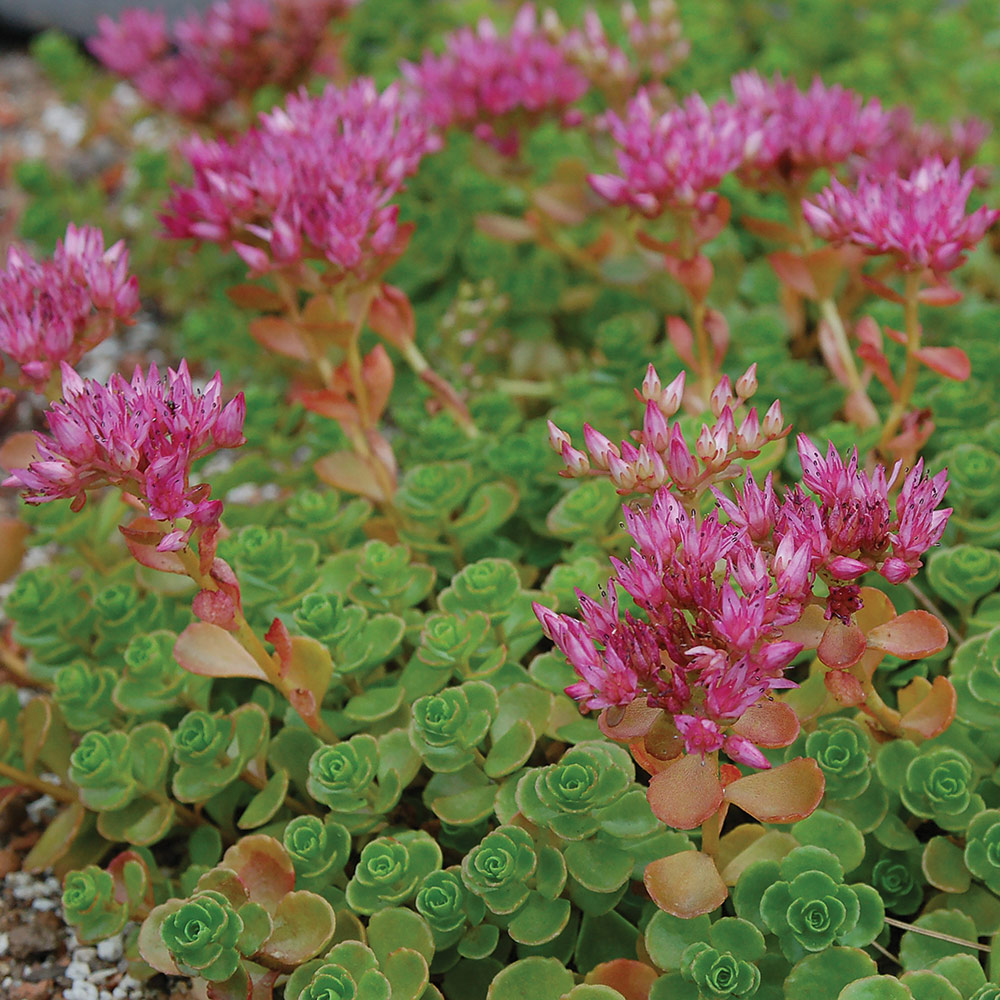
Sedum ground covers tend to remain low, under 6 inches tall, and to spread along the soil surface. The options are numerous, but there are certainly some standouts. ‘John Creech’ (S. spurium ‘John Creech’, Zones 3–9) features small, rounded green leaves that appear rosette-like on its sturdy stems. The extradense clumps spread to 4 inches tall and 12 inches wide (or more). Rose pink flowers show up in early summer.
‘Angelina’s Teacup’

If you’re a fan of the popular golden, needlelike foliage of ‘Angelina’ (S. rupestre ‘Angelina’, Zones 5–9), then you’re going to love its successor—‘Angelina’s Teacup’ (S. rupestre ‘Angelina’s Teacup’, Zones 5–9). This version has the same great foliage, only on a tighter-growing form that reaches 3 inches tall and 12 inches wide. The foliage truly is the star of the show, as this selection does not flower.
‘Weihenstephaner Gold’
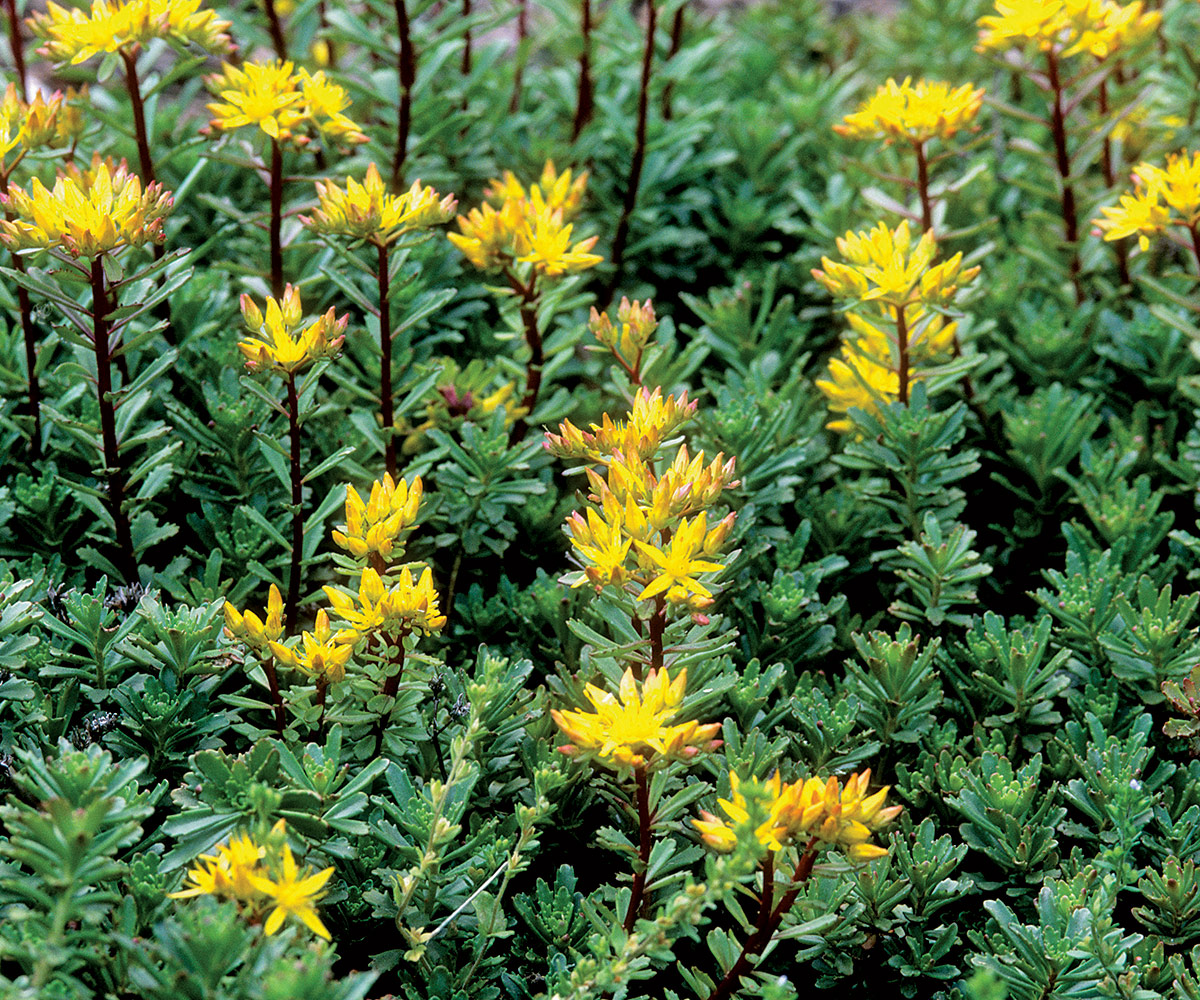
‘Weihenstephaner Gold’ (S. kamtschaticum var. floriferum ‘Weihenstephaner Gold’, Zones 3–8) is another great choice, especially for cold winter climates. It’s an evergreen ground cover that grows 4 to 6 inches tall and 12 inches wide with striking reddish winter foliage. Once it does green up in spring, the cupped and gently serrated leaves have an attractive dark green color. Then in the early summer, golden yellow flower clusters bloom just above the foliage.
Tip: Watch out for name changes
Recent DNA testing has caused plant taxonomists to reclassify many sedums under new genera names: Hylotelephium, Petrosedum, and Phedimus. To avoid causing too many headaches, this article sticks with the classification Sedum throughout, while acknowledging that these botanical reclassifications do exist.
Medium-size cloud forms that produce an appealing wave of color
‘Pure Joy’
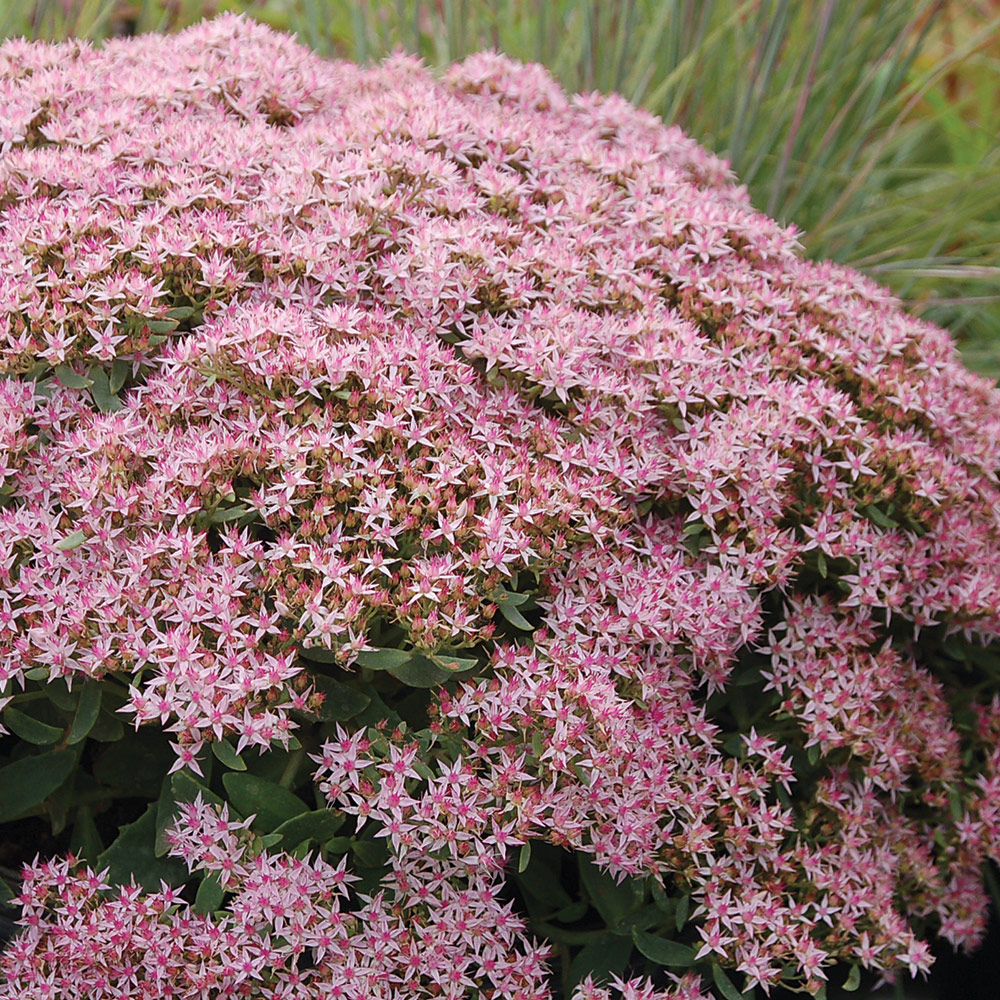
If you want to step up your sedum game, try these medium-size selections, which range from 6 to 12 inches tall. I call them “cloud types” because the flowers can cover the entire plant from top to bottom. If planted closely (12 inches or so apart) and allowed to grow together seamlessly, they can appear as a massive dome of flowers. Picture not just the color of bubble gum but the shape of a bubble, and that’s what ‘Pure Joy’ (S. ‘Pure Joy’, Zones 3–9) looks like in bloom in late summer to early fall. It has a great mounding habit (up to 12 inches tall and 20 inches wide) with beautiful blue-green toothed foliage. There are also two notable, naturally occurring mutations or sports that have arisen from ‘Pure Joy’—a white form called ‘Bundle of Joy’ (S. ‘Bundle of Joy’) and a cherry pink bicolor form named ‘Pride and Joy’ (S. ‘Pride and Joy’).
‘Dazzleberry’ and ‘Plum Dazzled’
There are also noteworthy medium-size performers with plum- to purple-colored leaves from the SunSparkler® series. They do not produce the same abundance of flowers, but you don’t really want elegant foliage like this to be entirely hidden under their raspberry pink blooms in late summer. Both hardy in Zones 4–9, ‘Dazzleberry’ (S. ‘Dazzleberry’) and ‘Plum Dazzled’ (S. ‘Plum Dazzled’) have chalky purple foliage on vigorous plants, yet they only reach 8 inches tall with a nice spread of 15 inches or more.
Shrublike sedums with sturdy stems that put on a show
‘Coraljade’
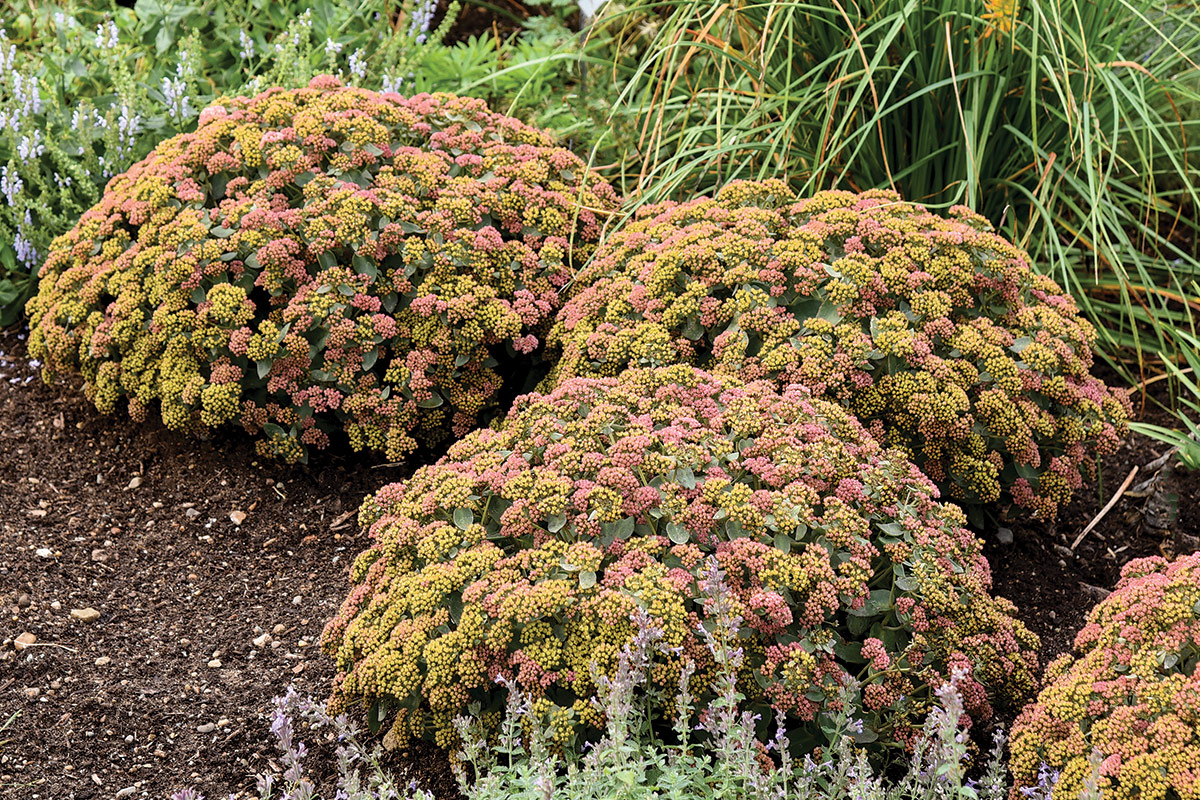
The shrublike autumn sedums resemble small, rounded woody plants growing up to 3 feet tall and wide, depending on the variety. As one of the most popular sedums (and perennials for that matter), Autumn Joy falls into this category. A newly available selection that closely resembles Autumn Joy is ‘Coraljade’ (S. ‘Coraljade’, Zones 3–9). It has nearly the same lime green buds evolving into coral pink flowers, but the foliage is thicker and darker green. The ultimate size is more compact at 16 to 18 inches tall and 26 to 30 inches wide.
‘Lime Joy’, ‘Thunderhead’ and ‘Pillow Talk’
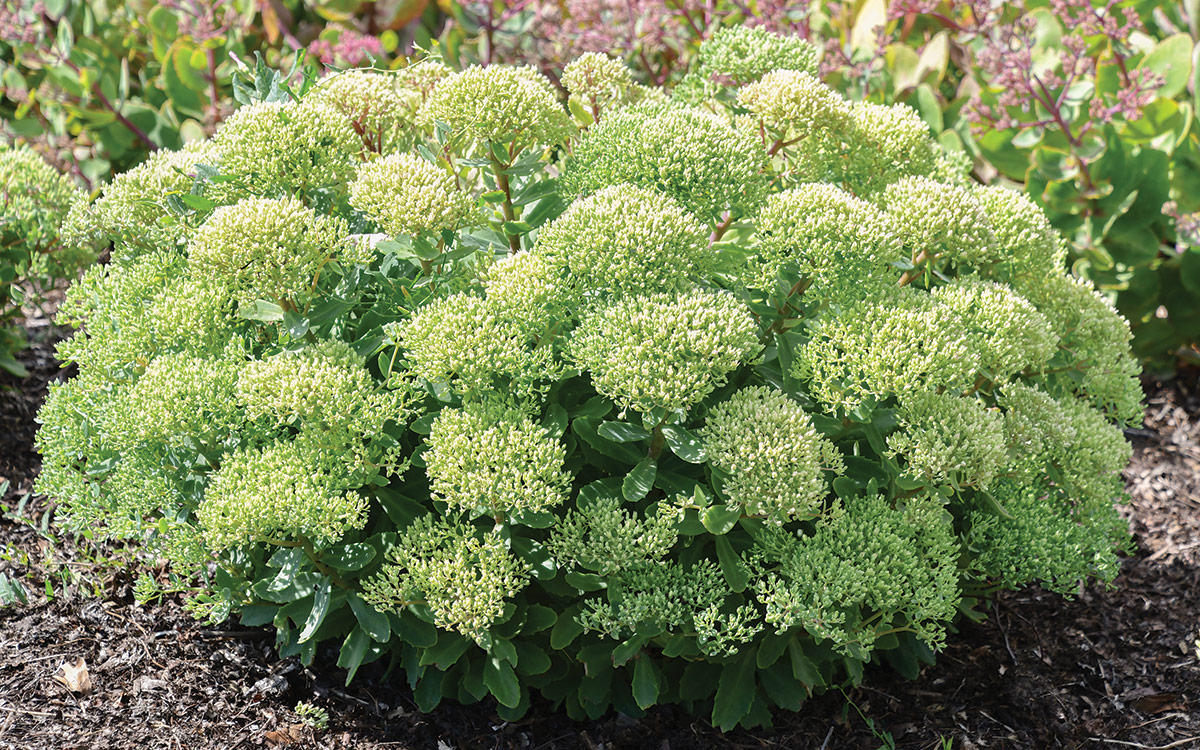
An even shorter and fuller autumn-type sedum, ‘Lime Joy’ (S. ‘Lime Joy’, Zones 4–9), is a delightful, vigorous plant that only reaches 15 inches tall and 18 inches wide and has broad lime-colored buds in midsummer. The 6-inch flower heads open with magenta petals in late summer. If you want that brighter color in a taller plant, I recommend ‘Thunderhead’ (S. ‘Thunderhead’) or ‘Pillow Talk’ (S. ‘Pillow Talk’). Hardy in Zones 4–9, these are both 18- to 24-inch-tall-and-wide plants that are topped with substantial (up to 6 inches wide) flower heads that last through winter. ‘Pillow Talk’ sports bright green foliage with red stems, while ‘Thunderhead’ has purplish leaves. I use the ornamental seed heads in holiday decorations.
While sedums are being reclassified taxonomically, the best of these varied plants will easily stand the test of time in the garden.
More on sedums:
- 10 Stunning Sedums for Dry, Sunny Areas of the Garden
- How to Have Success With Sedums
- Podcast Episode 119: Favorite Sedums
- Colorful Sedums for the Mountain West
Brent Horvath, author of The Plant Lover’s Guide to Sedums, is the president of and head plant breeder at Intrinsic Perennial Gardens, a wholesale nursery in Hebron, Illinois.
Sources
- Bluestone Perennials, Madison, OH; 800-852-5243; bluestoneperennials.com
- Digging Dog Nursery, Albion, CA; 707-937-1130; diggingdog.com
- Plant Delights, Raleigh, NC; 919-772-4794; plantdelights.com
- Rare Roots, Mechanicsville, VA; 804-296-6592; rareroots.com
- Romence Gardens and Greenhouses, Grand Rapids, MI; 888-907-5268; romencegardens.com



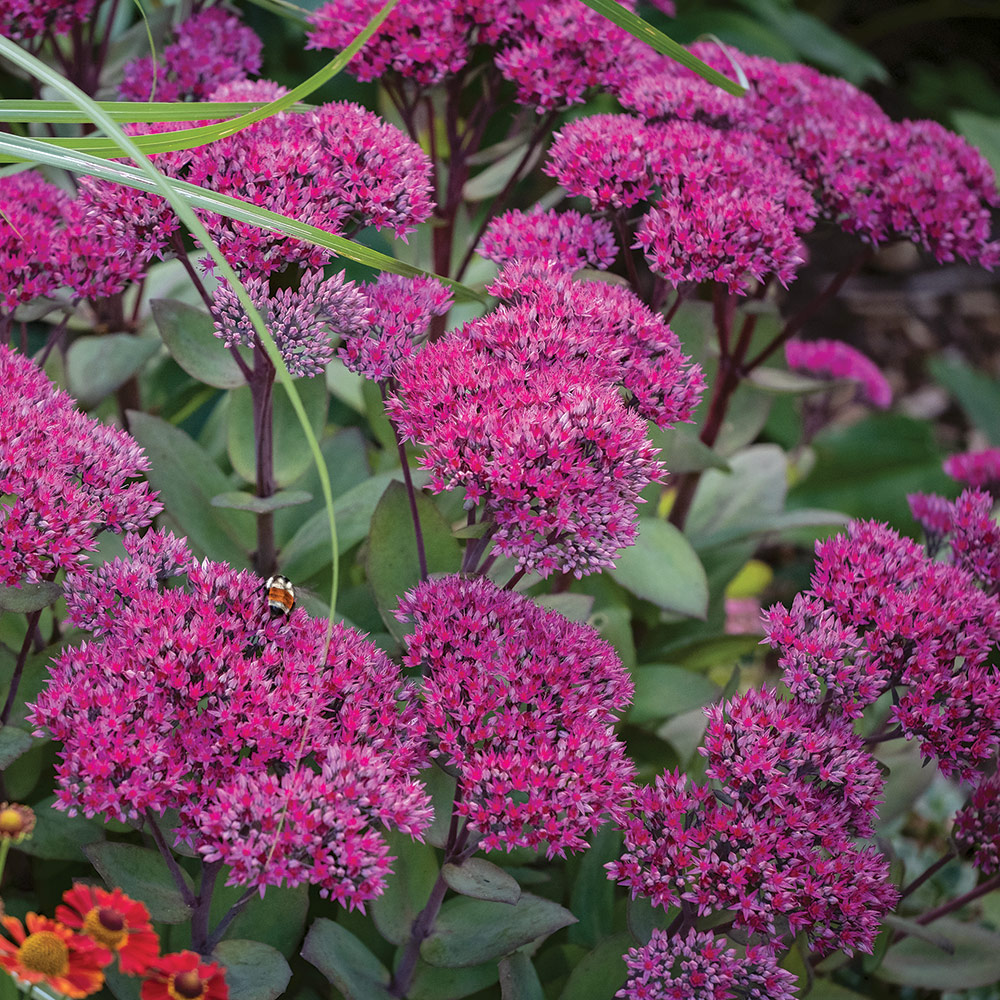

















Comments
Log in or create an account to post a comment.
Sign up Log in